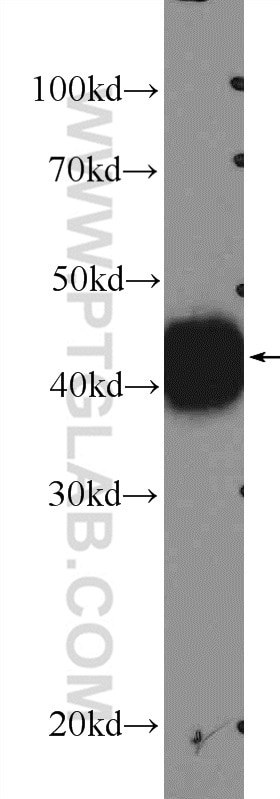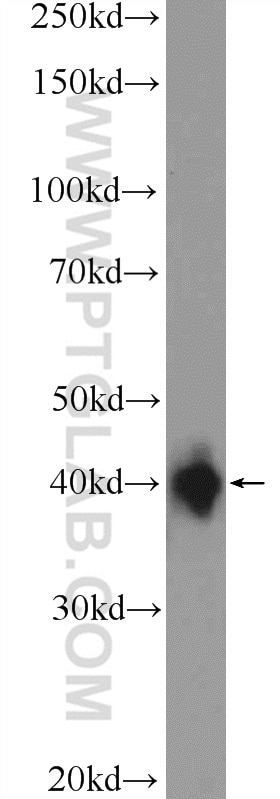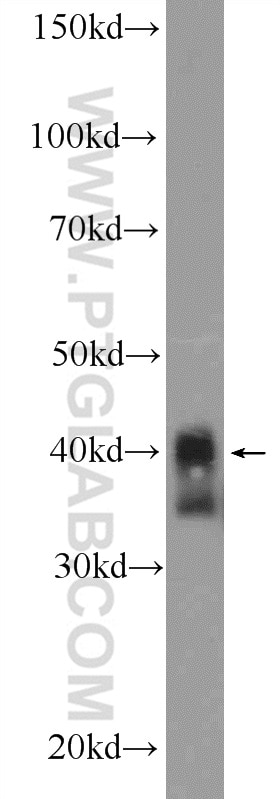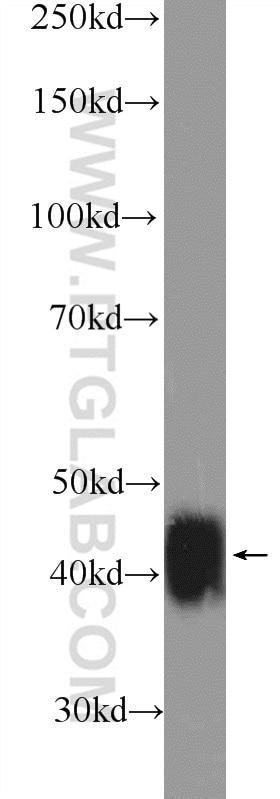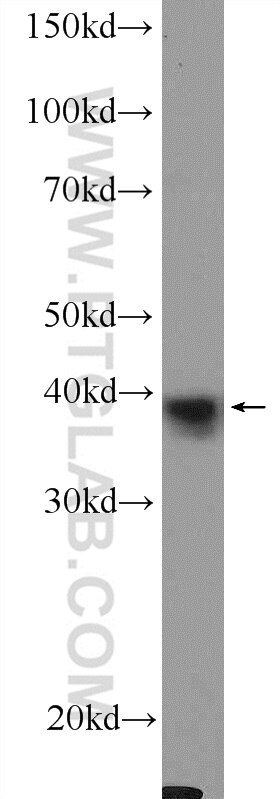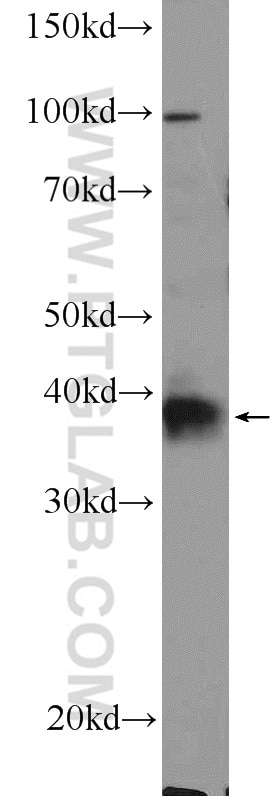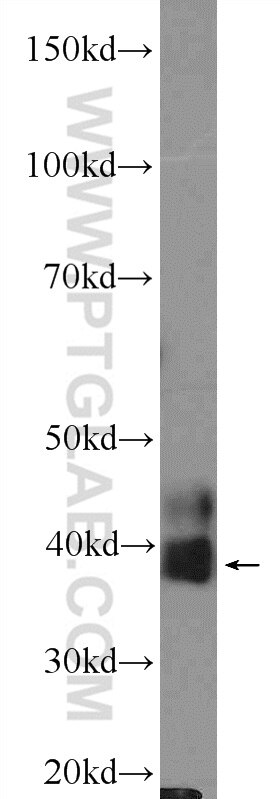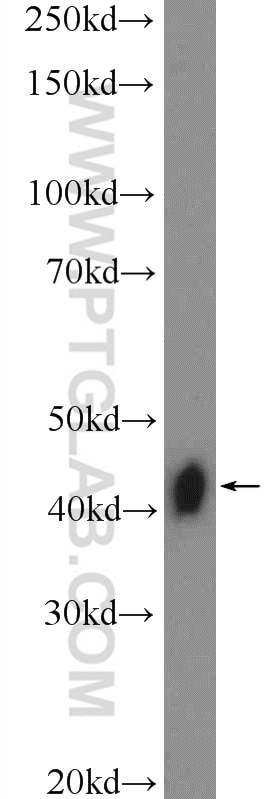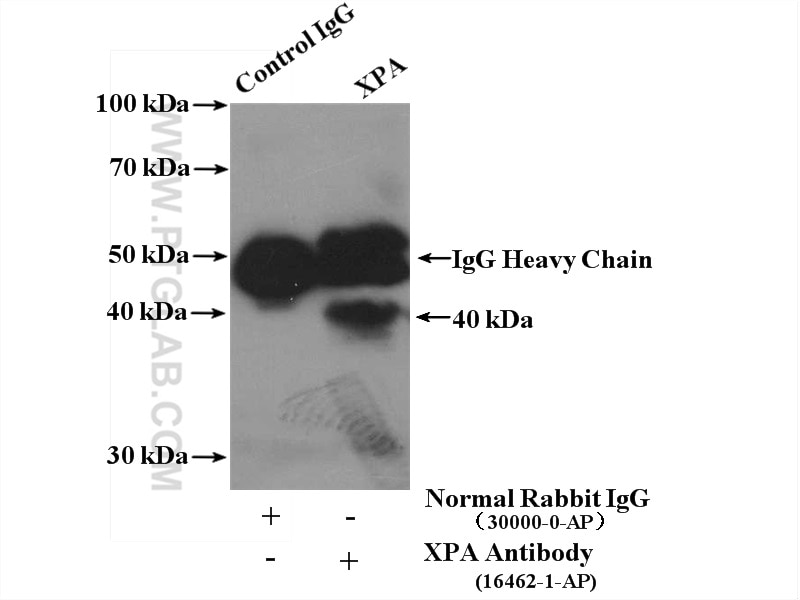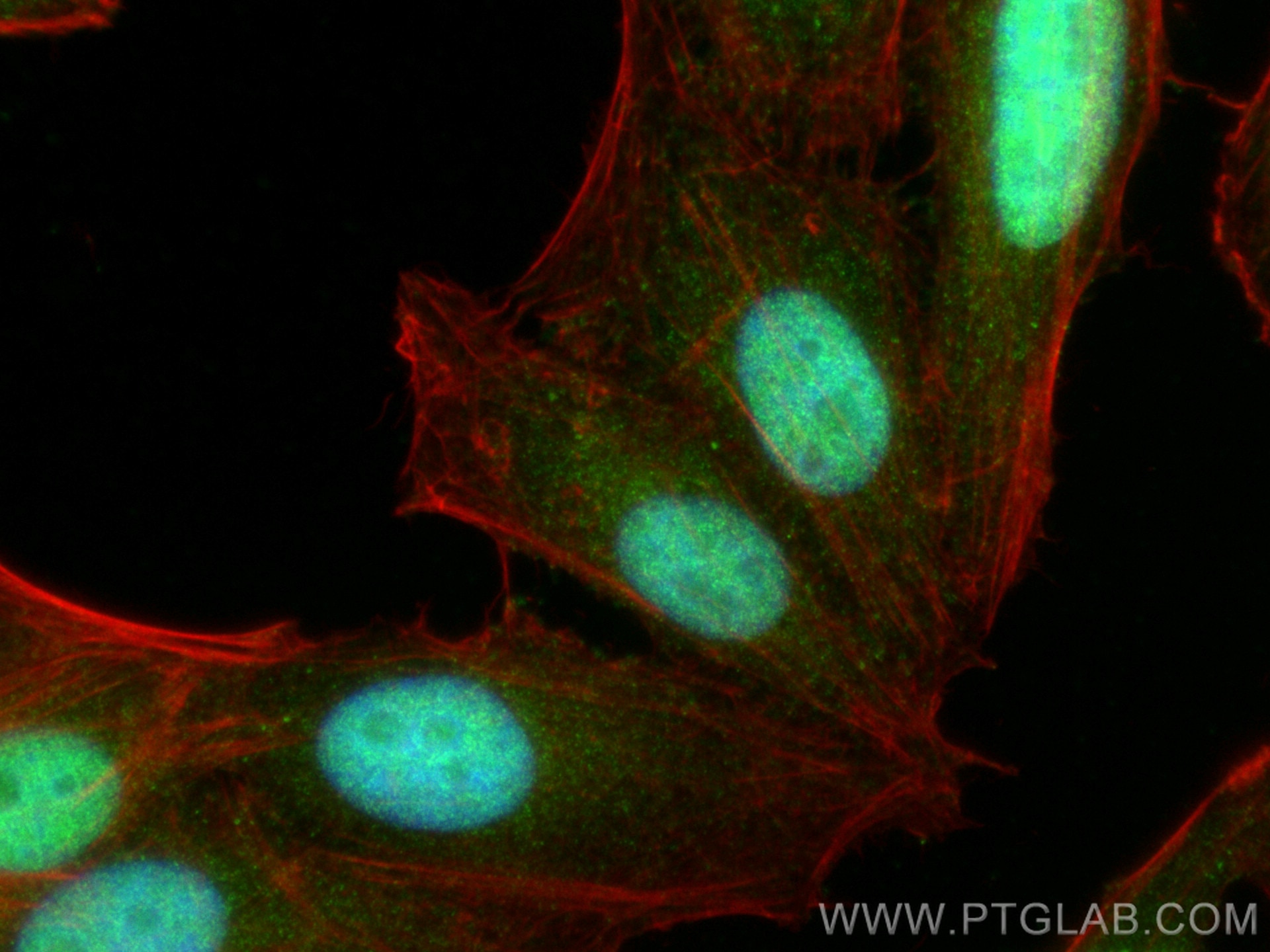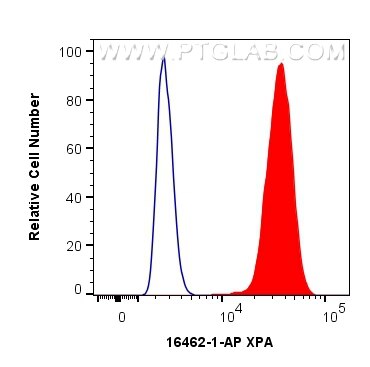Anticorps Polyclonal de lapin anti-XPA
XPA Polyclonal Antibody for WB, IF/ICC, FC (Intra), IP, ELISA
Hôte / Isotype
Lapin / IgG
Réactivité testée
Humain, souris et plus (1)
Applications
WB, IF/ICC, FC (Intra), IP, ELISA
Conjugaison
Non conjugué
N° de cat : 16462-1-AP
Synonymes
Galerie de données de validation
Applications testées
| Résultats positifs en WB | cellules L02, cellules HeLa, cellules MCF-7 |
| Résultats positifs en IP | cellules L02, |
| Résultats positifs en IF/ICC | cellules HepG2, |
| Résultats positifs en FC (Intra) | cellules HepG2, |
Dilution recommandée
| Application | Dilution |
|---|---|
| Western Blot (WB) | WB : 1:200-1:1000 |
| Immunoprécipitation (IP) | IP : 0.5-4.0 ug for 1.0-3.0 mg of total protein lysate |
| Immunofluorescence (IF)/ICC | IF/ICC : 1:200-1:800 |
| Flow Cytometry (FC) (INTRA) | FC (INTRA) : 0.40 ug per 10^6 cells in a 100 µl suspension |
| It is recommended that this reagent should be titrated in each testing system to obtain optimal results. | |
| Sample-dependent, check data in validation data gallery | |
Applications publiées
| WB | See 7 publications below |
| IF | See 2 publications below |
Informations sur le produit
16462-1-AP cible XPA dans les applications de WB, IF/ICC, FC (Intra), IP, ELISA et montre une réactivité avec des échantillons Humain, souris
| Réactivité | Humain, souris |
| Réactivité citée | Humain, poisson-zèbre, souris |
| Hôte / Isotype | Lapin / IgG |
| Clonalité | Polyclonal |
| Type | Anticorps |
| Immunogène | XPA Protéine recombinante Ag9536 |
| Nom complet | xeroderma pigmentosum, complementation group A |
| Masse moléculaire calculée | 374aa,42 kDa; 273aa,31 kDa |
| Poids moléculaire observé | 40 kDa |
| Numéro d’acquisition GenBank | BC014965 |
| Symbole du gène | XPA |
| Identification du gène (NCBI) | 7507 |
| Conjugaison | Non conjugué |
| Forme | Liquide |
| Méthode de purification | Purification par affinité contre l'antigène |
| Tampon de stockage | PBS with 0.02% sodium azide and 50% glycerol |
| Conditions de stockage | Stocker à -20°C. Stable pendant un an après l'expédition. L'aliquotage n'est pas nécessaire pour le stockage à -20oC Les 20ul contiennent 0,1% de BSA. |
Informations générales
XPA, also named as DNA repair protein complementing XP-A cells, is a 272 amino acid protein, which belongs to the XPA family. XPA is expressed in various cell lines and in skin fibroblasts. XPA is involved in DNA excision repair. Initiates repair by binding to damaged sites with various affinities, depending on the photoproduct and the transcriptional state of the region. XPA is required for UV-induced CHEK1 phosphorylation and the recruitment of CEP164 to cyclobutane pyrimidine dimmers (CPD), sites of DNA damage after UV irradiation. The calculated molecular weight of XPA is 31 kDa, but modified XPA protein is about 40 kDa (PMID: 17848622).
Protocole
| Product Specific Protocols | |
|---|---|
| WB protocol for XPA antibody 16462-1-AP | Download protocol |
| IF protocol for XPA antibody 16462-1-AP | Download protocol |
| IP protocol for XPA antibody 16462-1-AP | Download protocol |
| FC protocol for XPA antibody 16462-1-AP | Download protocol |
| Standard Protocols | |
|---|---|
| Click here to view our Standard Protocols |
Publications
| Species | Application | Title |
|---|---|---|
Adv Healthc Mater Macromolecular NO-Donor Micelles for Targeted and Augmented Chemotherapy against Prostate Cancer | ||
Front Pharmacol Triptolide enhances carboplatin-induced apoptosis by inhibiting nucleotide excision repair (NER) activity in melanoma | ||
Sci Total Environ AHR-mediated DNA damage contributes to BaP-induced cardiac malformations in zebrafish |
